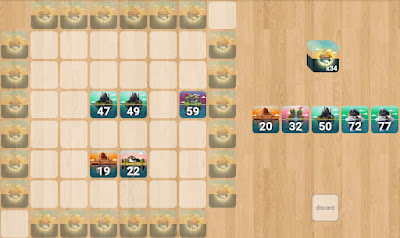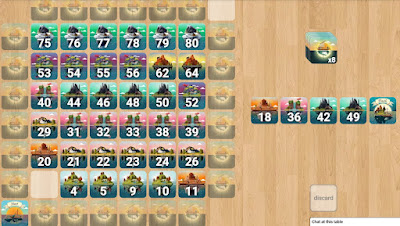Most of the games I publish are failures. That sounds weird, and clickbait-like, but it's true. Dancing Queen should be considered a success, because Matagot picked it up and published an international edition. But this was later. In 2021 I designed Dancing Queen because I signed up for a game design competition on BGG. Winning that competition was a huge boost to my confidence level. And maybe to my recklessness too. I tried to submit the game to some publishers who make card games, to no avail. So I decided to publish it myself. I must admit this is an ego trip. And this was how my indie design studio and publisher Cili Padi Games was born.
A sensible person who goes into game design is not doing it for money. Making money from designing games has an extremely low success rate. If you ask me to invest in a start-up game design and publishing house, I'll just say no without asking. That's not called investing. That's charity. We design games because of the ego trip. To phrase it more positively, this is how we explore meaning in life. Creation is an exploration of meaning and purpose. Starting a small indie publisher and printing your own game is not prohibitively expensive. The barrier of entry is low, even if the success rate is miniscule. We do it simply because we want to see our design published. We are spending money, time and energy to fulfil a dream. I want to be honest with myself on this.
I was lucky that Dale Yu from the Opinionated Gamers, one of the top boardgame bloggers in the world, liked Dancing Queen and recommended it. That was how it got picked up by Matagot. It became my first game published internationally by an established boardgame publisher. In the past few years I have been taking part in game design competitions and pitching my games to publishers. I did not have much success. In competitions my games brought home consolation prizes at best. One moderate achievement was Taking Sides (later renamed to Rebels of the Three Kingdoms) getting through to the second round of the Hippodice game design competition. I take part in competitions as a strategy for marketing my games and myself. If I can win something, I can use that as a selling point. Just like Dancing Queen. In the larger and better run competitions, another benefit is getting feedback from experienced game designers and players. At some of the smaller competitions, sometimes I have doubts about the judges. How well are they judging the entries? There was one particular incident I was quite disappointed about. One of the judges admitted that one of the winning games had weak gameplay, but it was pretty. This goes against my belief about game design competitions. A game design competition should be about game design, not art and graphic design. Yes, a published game must have good art, professionally done. That's the minimal industry standard. But this is a game design competition.
I have learned to not get too fixated about competition results. People's tastes in boardgames can be very different. A judge not liking my game may not necessary mean my game is bad. It might. Or it might not. Or maybe I'm just sour grapes. I should spend more time comparing my games with the winning games to see how I can do better. Or differently. If I want to win competitions, it is not only about making a good game. It is about making a game the judges like.
I have also learned to be less fixated about failing to pitch to publishers. When accepting pitches, publishers have so many games to vet through, to be able to catch their attention requires your game to have something that's stands out. There are many reasons why a publisher is not interested in your game. It can be because they already have a similar game. Or they do not want to go into this genre. Or their hands are full for the next 12 months. It's not only about whether the game itself is good. I had tried to pitch Ali Baba and the Forty Thieves to a publisher. That didn't work out, so I published it myself. Pinocchio is a game that other publishers didn't want, and it didn't even survive the first round in a competition. Rebel of the Three Kingdoms will likely be my 2026 project. I had wanted to pitch that to a publisher too, but that didn't work out either. So I have to do it myself. This is my string of failures.
One good news is Malaysian Holidays. This is a game I successfully pitched to a publisher. This is my second game which found a publisher. I am very excited about it.
In addition to rejection at competitions and when pitching to publishers, another type of rejection I need to learn to accept is from the reviewers. This type is a little easier to handle. I know games is a very personal thing. People have different tastes and preferences. I have been told my games are dull, lack control, too mathy, and overly simplistic. While I learn to not be discouraged by negative feedback, I also understand the importance of learning from them. If different people give me the same negative feedback, they are probably right and I should make improvements. In fact, every negative feedback is right, in that it reflects what that person feels about the game.
Some do enjoy my games. It always make me happy when I meet someone and they tell me they've played Dancing Queen before and they think it's great.
The boardgame industry doesn't need more game designers or game publishers. We have more than enough. Looking at the number of games published every year, we know no one can play them all. Even if you skip all the mediocre and poor games, there are already more good games than you can ever finish playing. The world doesn't need designers to do designing. It is the designers who need to do designing. We need this dream. It is purpose. It is meaning.
Keep hustling and learning.
































































